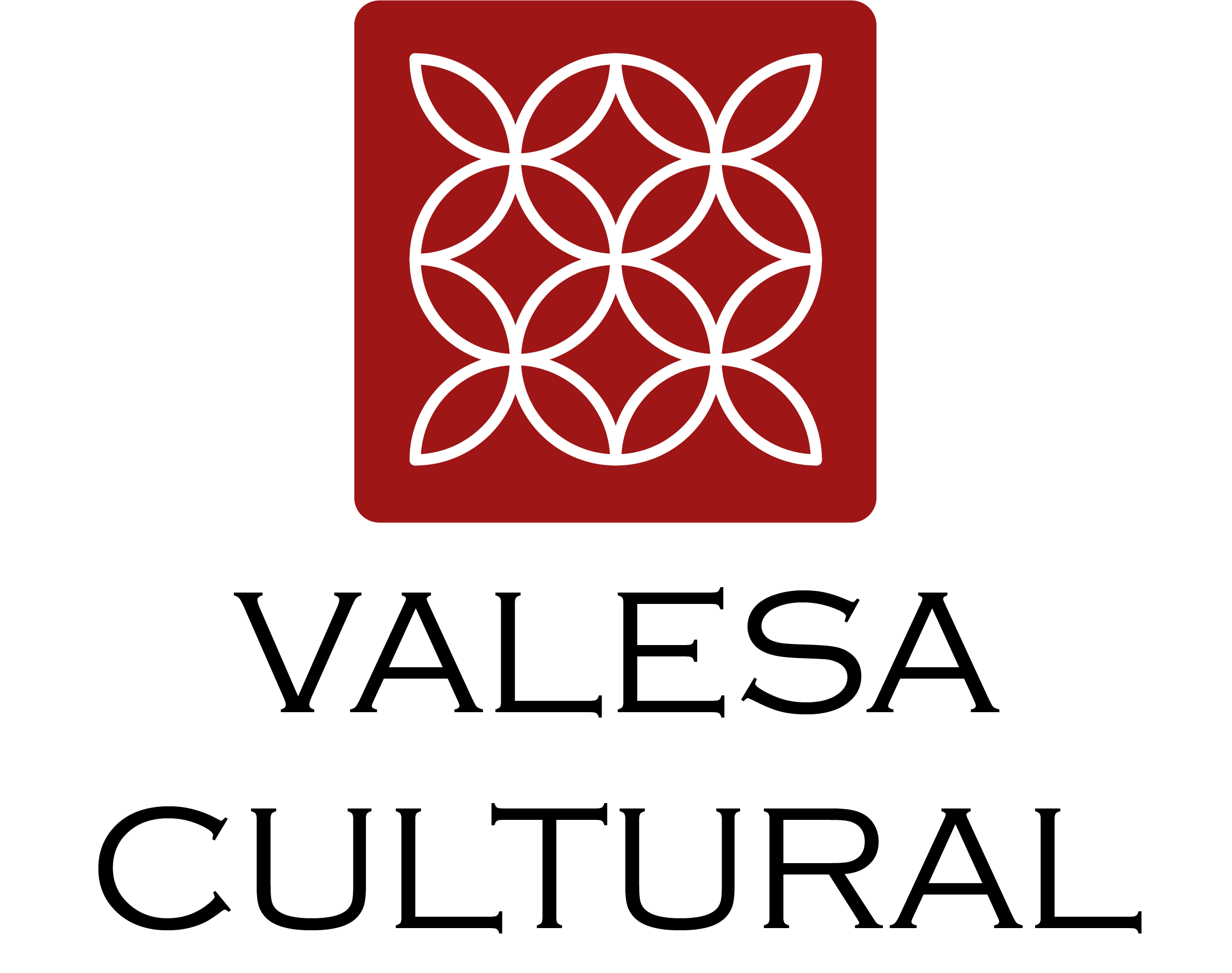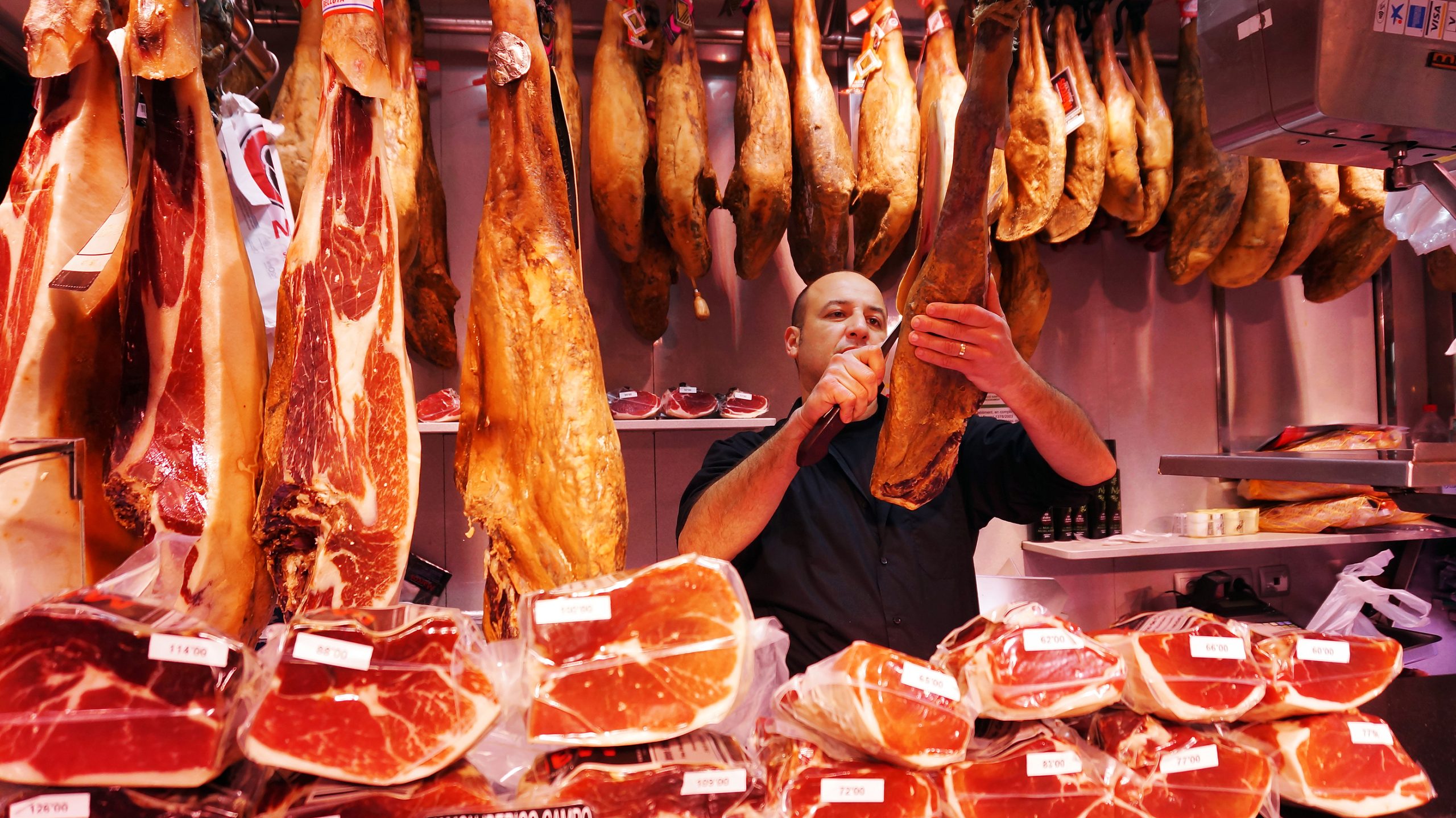Jamón is the pride and joy of Spanish gastronomy. It is a staple in almost all households and restaurants all over the country. It can be eaten at any time of day: on toast with fresh tomato for breakfast, mixed in with fried eggs and potatoes for lunch, or paired with a glass of red wine and some olives as a small snack.
Ham is not just a simple cured pork to add to your charcuterie board; it is actually quite complex and has several varieties:

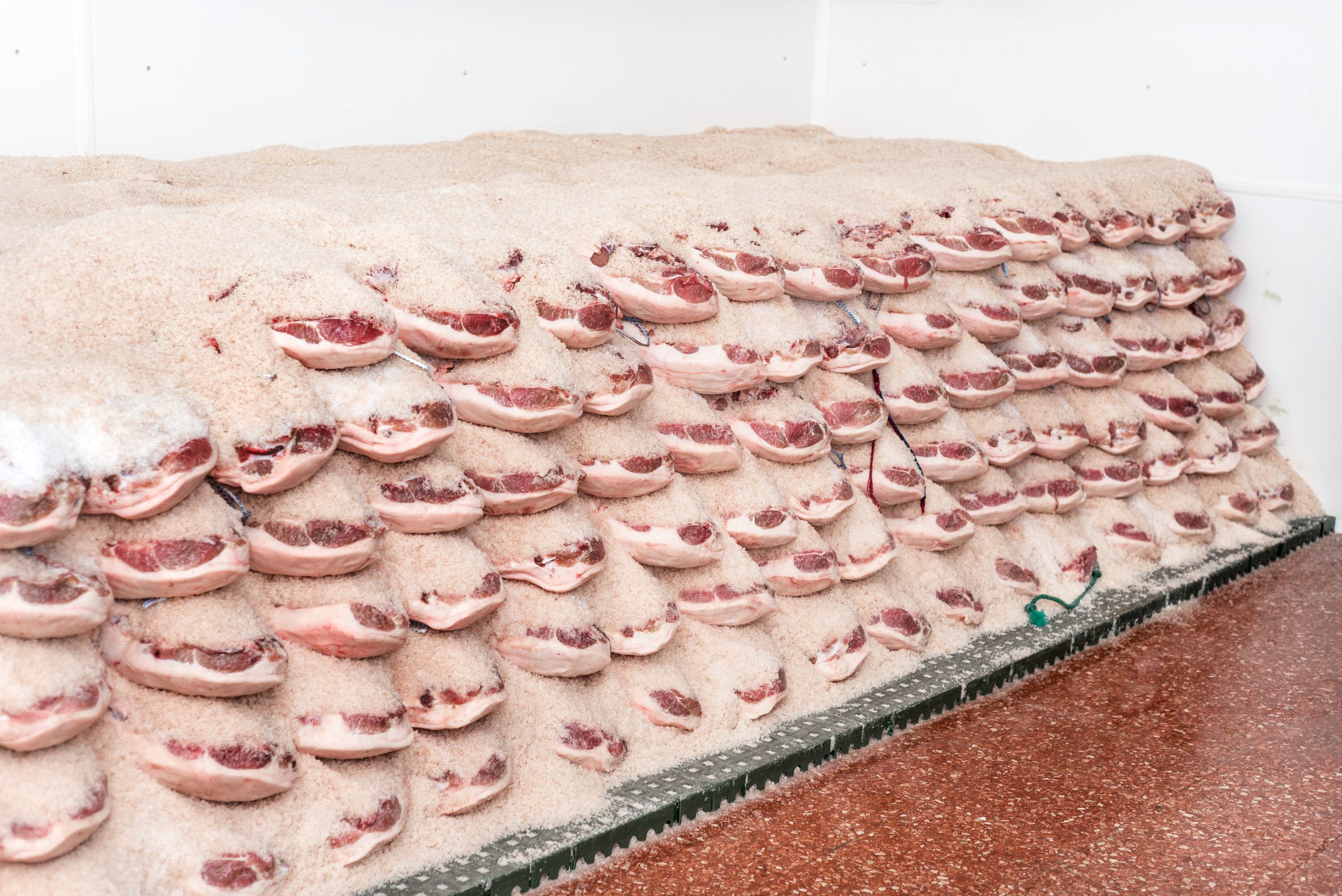
Jamón Serrano – this is the least expensive and therefore most common type of ham. It is made from normal pork, typically from the Duroc or Landrace breed of pig. These pigs are farm-raised and feed mostly on grains. The meat is aged 8-24 months and has a mild flavor.
Jamón Ibérico – this type of ham comes from crossbreeds of the Ibérico breed of pig which is indigenous to the Iberian peninsula. These pigs can be farm-raised or pasture-raised. They feed on grains, but in some cases they also consume acorns and grass. The meat is aged a minimum of 2 years and has a deeper color and more complex flavor.
Jamón Ibérico de bellota – ‘bellota’ in English means acorn. This type comes from crossbred free-range Ibérico pigs who feed exclusively on acorns. The percent of Ibérico breed is indicated on the label. However, to obtain the purest and most coveted form of ham, jamón 100% Ibérico de bellota, it needs to come from pure-bred Ibérico pigs. These pigs live outdoors for most of their lives in the Dehesa region of southern and western Spain. The meat is aged 2-4 years, and the fat is soft and melts like butter. It’s definitely the most exclusive ham, usually served at celebrations such as weddings.
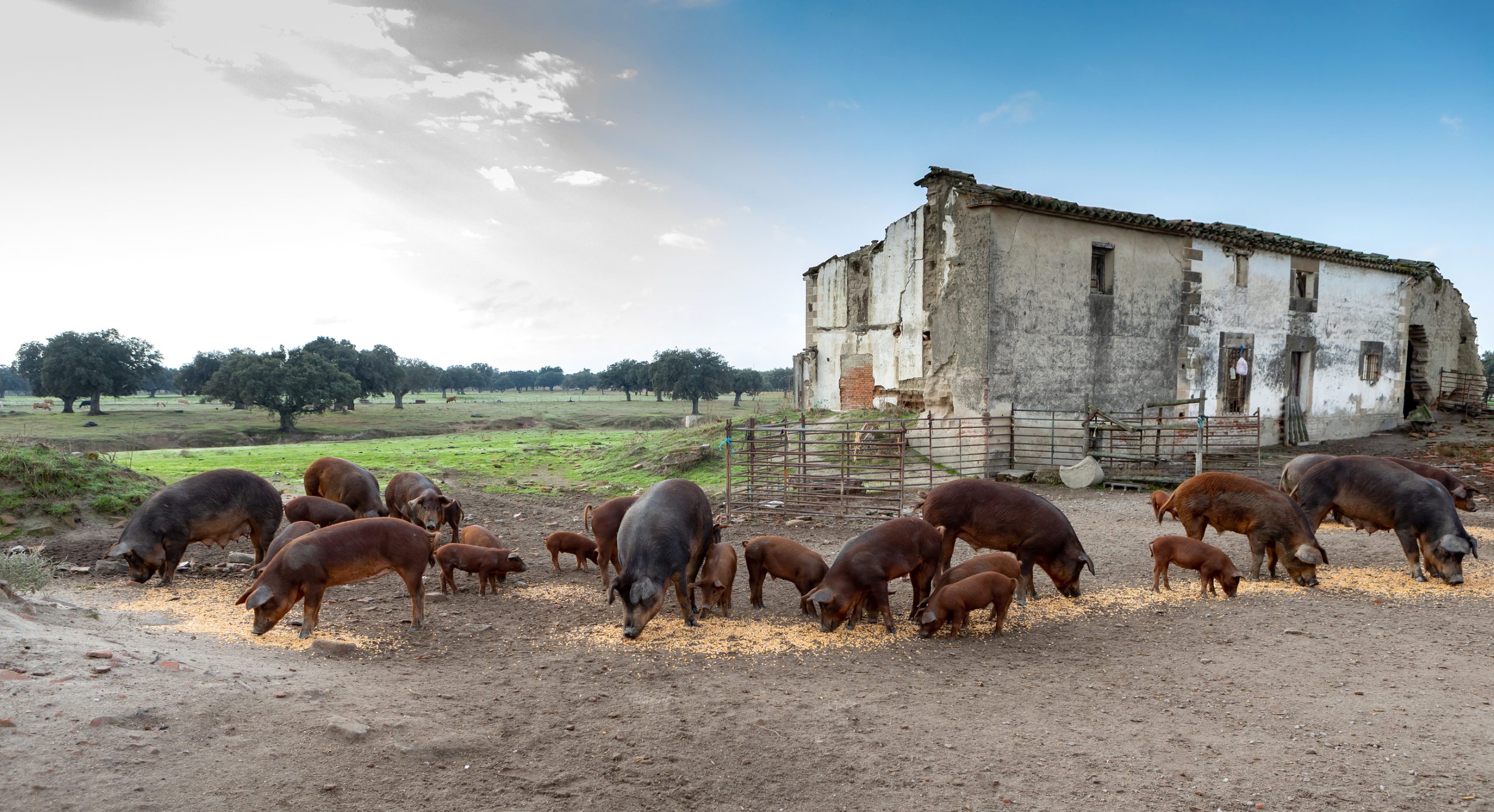
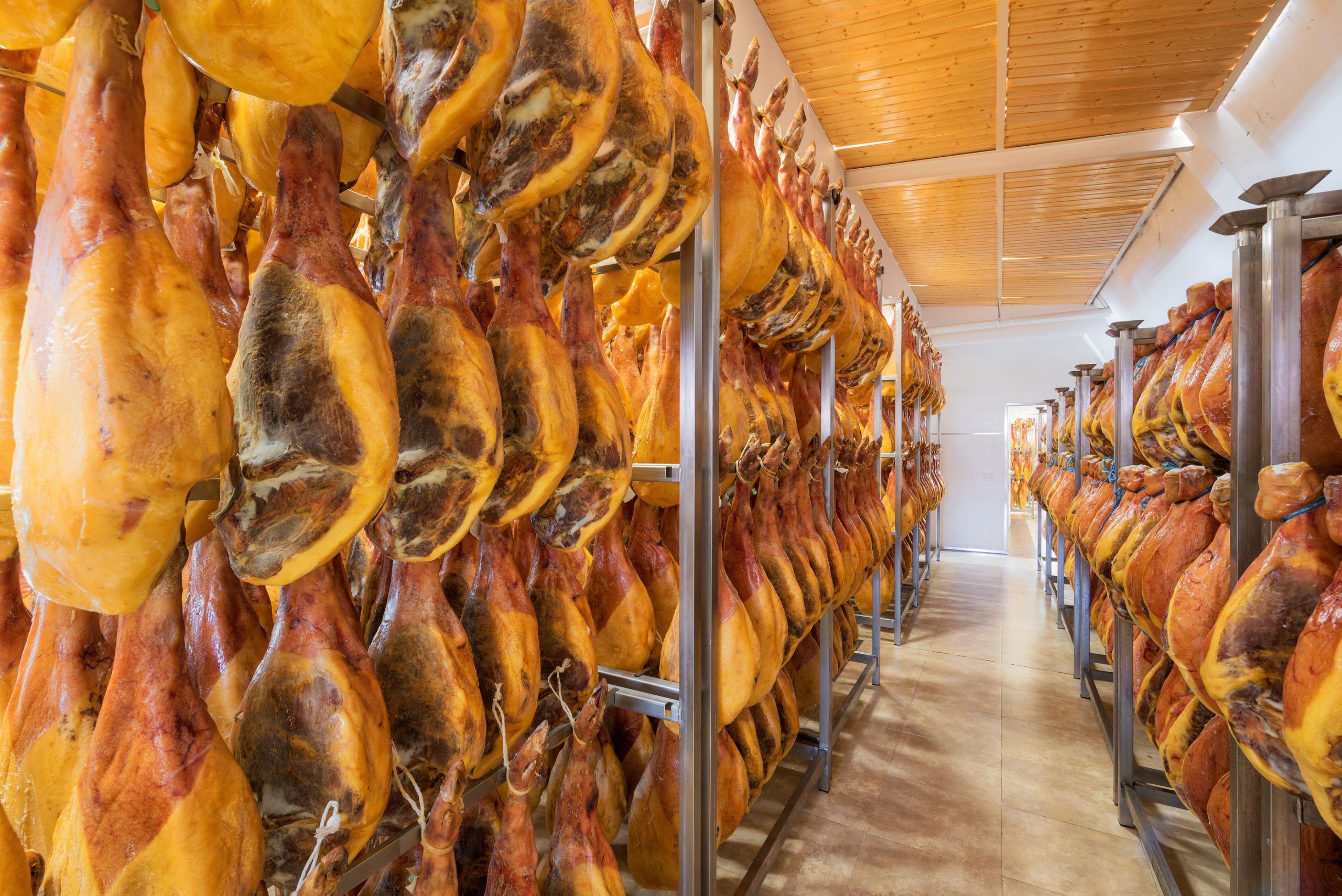
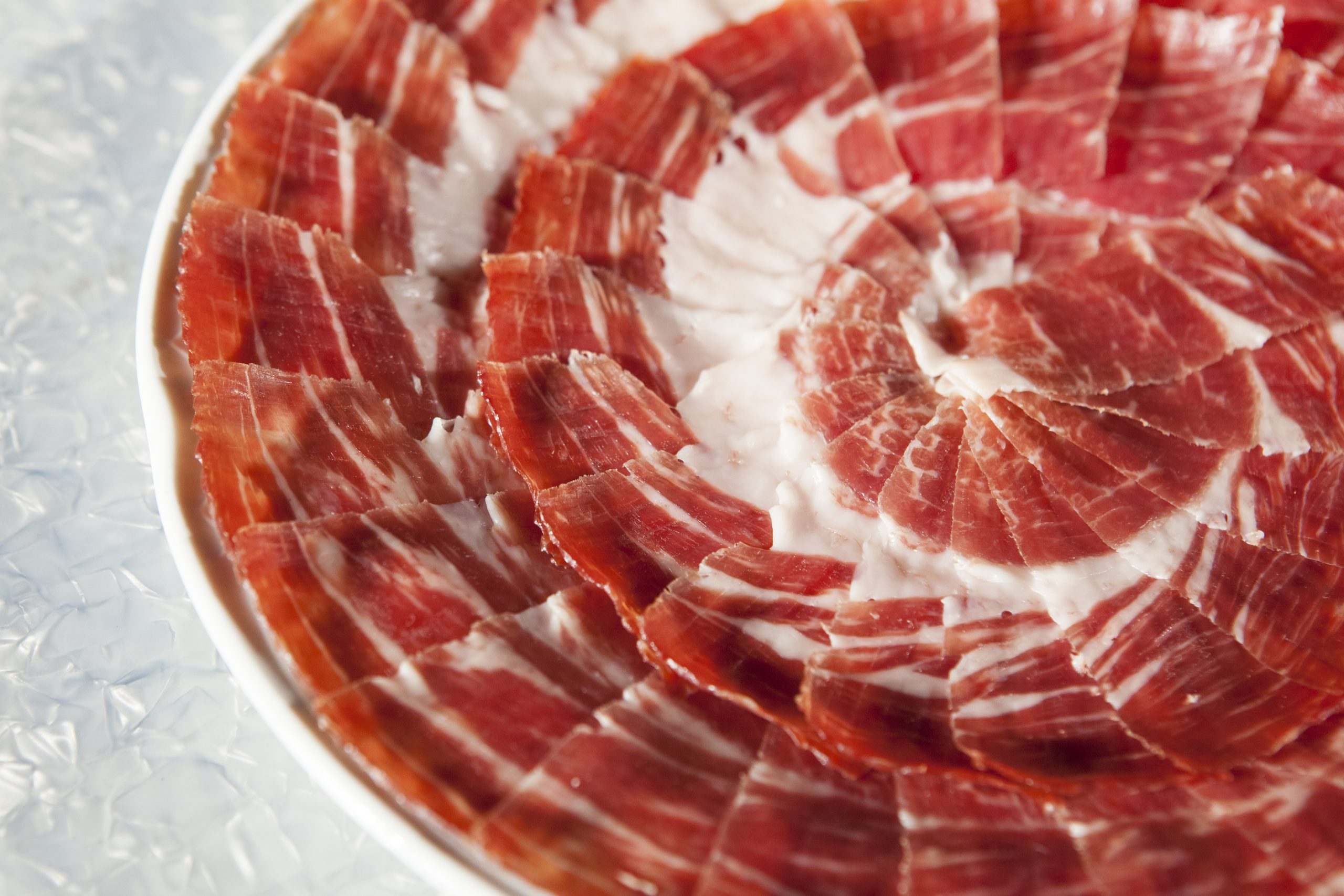
It’s important to distinguish Spanish jamón from Italian prosciutto. While both are cured hams from white pigs, Spanish ham is cured longer and has a richer, deeper flavor. Prosciutto has a softer texture, a milder flavor and is rosy pink in color.
Spain takes their ham very seriously. There are government protections in place to make sure these products meet the required standards. One distinction you may have seen is the PDO, “Protected Denomination of Origin”. This label ensures that the jamón was produced in a certain region and with the correct characteristics that define it.
Our team would be happy to advise you on where to eat during your travels if you are looking for delicious, top quality, local foods like jamón.
